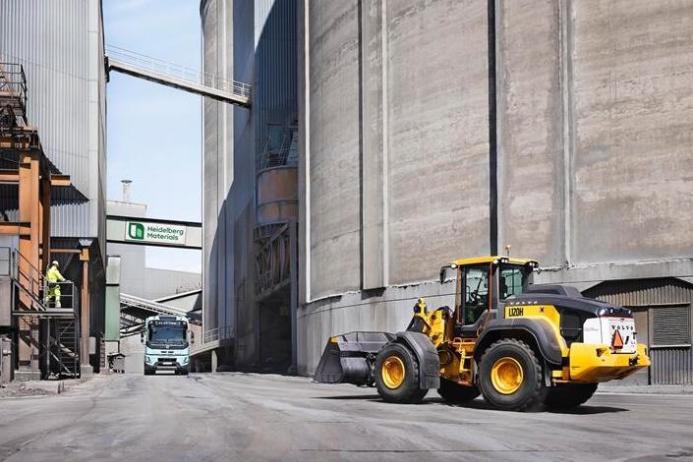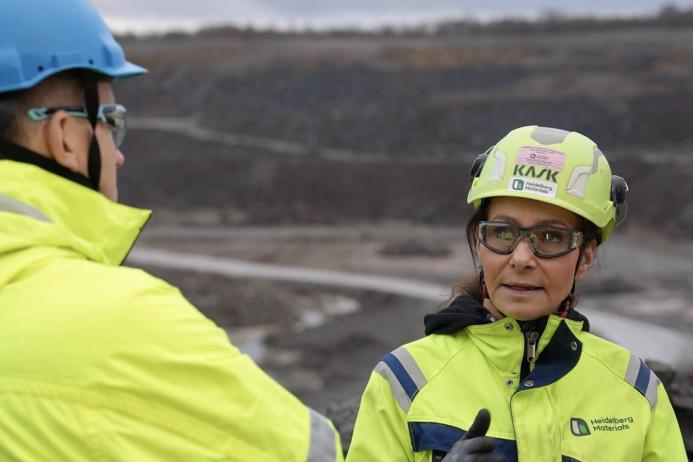Game-changing partnership moves forward
Volvo CE and Heidelberg Materials advance partnership to decarbonize construction materials
A game-changing partnership has taken its next steps by introducing solutions to reduce carbon emissions while maintaining high productivity. The milestones met by Volvo Construction Equipment and Heidelberg Materials Northern Europe signal the potential to decarbonize construction materials through a holistic approach that combines advanced digital tools, zero emission solutions, and close collaboration.
Since the signing of a Memorandum of Understanding in 2023, the two companies have been working together to explore and introduce electric solutions for loading and transport activities within Heidelberg Materials’ Northern European operations.
Following the completion of an extensive site study, the collaboration has now entered a new phase with the formulation of a joint roadmap. The agreement supports Heidelberg Materials’ aim to fulfil their zero-emissions roadmap with tangible actions, adapting over time to evolving technologies and productivity and sustainability goals.
A project team comprising cross-functional experts from the two organizations analysed Heidelberg Material’s operations at key sites at Brevik in Norway, and Slite (Gotland), Skövde, and Bro in Sweden. Using advanced digital tools, the study examined factors such as fuel consumption, material movement, cycle routes, machine types, and operator behaviour.
Based on these insights and guided by Volvo CE Solutions Sales, the team proposed actionable recommendations to reduce emissions while supporting productivity goals. Setting the blueprint for industry decarbonization, it represents a new form of close collaboration between companies to identify areas for improvement and integrate solutions seamlessly over time.
Giv Brantenberg, general manager of Heidelberg Materials Northern Europe, said: ‘The collaboration with Volvo CE has provided us with important knowledge and input for the design of our zero-emission roadmap, identifying measures to be implemented over time and how to scale these up across our businesses and product lines. Strong partnerships like this are key to driving widespread transformation.’
Carl Slotte, Volvo CE’s head of Europe, said: ‘This partnership represents a pioneering approach to decarbonization that puts the customer at the centre. No customer is ever the same as another, so we must be flexible and innovative in our approach if we are to accelerate our industry’s transformation. We demonstrate that actions can be taken in the here and now, while also setting the direction for the future, based on our own evolving solution portfolio.’

Both parties say a partnership approach of this kind requires transparency and trust from both sides. For their part, Heidelberg Materials provided data on quantifications, carbon reduction targets, performance requirements, and operational details, while Volvo CE shared knowledge built up over decades of site optimization work.
Electric machines and charging solutions play a key role in helping to reduce carbon emissions and Heidelberg Materials already work with several L120H Electric conversion wheel loaders – but they are only part of the solution. Advisory and digital services, such as Site Optimization, Connected Map, and Performance Indicator, help to collect data, measure performance and identify step-by-step operational improvements, while financial solutions help to enable early adoption of new technologies. Innovative business models are also integral to enabling deployment of zero-emission solutions as soon as they are available on the market.
Moreover, dealers Volvo Maskin in Norway and Swecon in Sweden have been instrumental in the project by equipping machines, delivering them to site, and providing ongoing support throughout. In Norway, additional operator training was also provided.
Volvo CE and Heidelberg Materials say the partnership demonstrates that through full site studies at multiple locations, knowledge can be built to drive positive change designed to make a real impact. It also has the potential to serve as an example to other industry players of how to drive decarbonization while aligning with production targets and evolving climate technologies.










